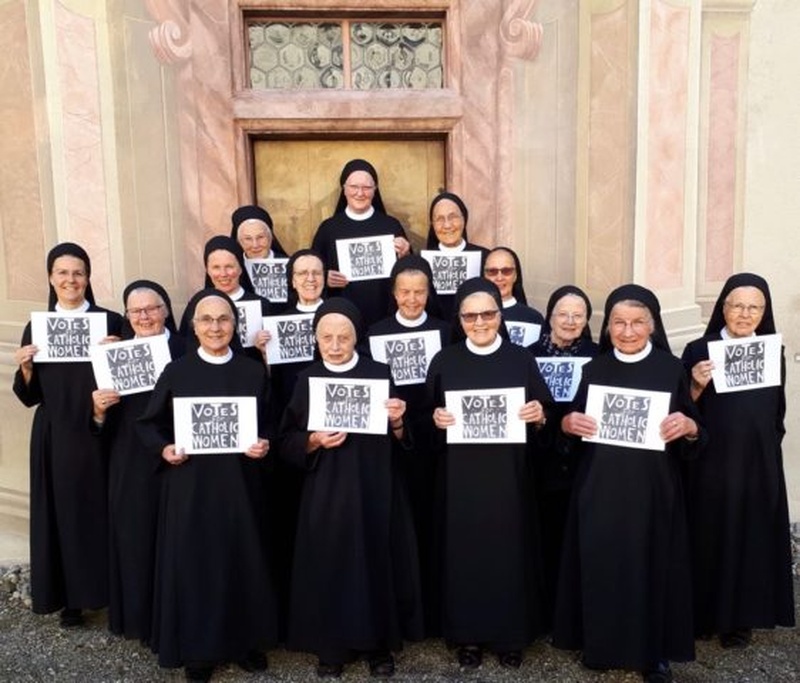Female Leadership in the Catholic Church
A previous issue of the Faith Feed explained the Papacy and the role of Pope Francis as the head of the Catholic Church on earth. Within the hierarchy of Church leadership there are various roles men can hold starting from those that relate to the priesthood, progressing then to higher positions of bishop and archbishop. The Pope also appoints cardinals to act as part of an advisory committee and it is these men who elect the next Pope. Few women are represented in leadership and decision-making roles inside the global church despite the fact that women make up more than half of the 1.2 billion Catholics worldwide.

How are major decisions made in the Church and why aren’t women involved?
When issues arise and decisions are to be made, the Pope consults “the people of God” through a synod or synodal assembly. This has been the case since the Second Vatican Council in the 1960s. The process involves the Pope choosing a topic of relevance to the current affairs of the Church, global consultations being carried out, preparation of a document that gathers all input on the issues, the coming together of chosen participants to discuss and vote on the issue as permitted. The participants chosen include bishops, leaders of the Roman Curia, priests, representatives of male religious orders (eg brothers), representatives of leaders of women’s religious orders and auditors (other participants considered experts on the issue). Only those who are men and who hold positions of leadership within the Church hierarchy can vote at these synods. Women who participate in this process do not hold the right to vote. Pope Francis made a change in 2015 to allow lay religious brothers the right to vote in synods. Religious sisters have not been given this same right despite having the same standing as religious brothers according to Canon Law. The only difference is gender.
The call for change: #overcomingsilence
A campaign has been created called #overcomingsilence that has various goals, one of them being to achieve voting rights for women in future synods. The campaign highlights the gender inequality in the current synod processes and stresses that “these women have dedicated their whole lives to service in the footsteps of Jesus…Surely, their voices must also be heard in the processes that determine the direction of our Church in these critical times”. Campaign organisers also argue that this is fair given that in 2015, there were more than 670,320 women religious in the world compared to 54,229 men. These statistics also mean that women religious exceed the number of priests globally by 61%.
Participating in the campaign
People are encouraged to participate in the campaign by writing a message at the official website (see address below). Information sharing on social media is another way action can be taken. Year 10 students will be learning about this issue and #overcomingsilence in Religious Studies lessons and our student leaders will be promoting the cause through assemblies, the Student Representative Council and Pastoral lessons.
For more information about the campaign see https://overcomingsilence.com
Louise East - Religious Studies Coordinator